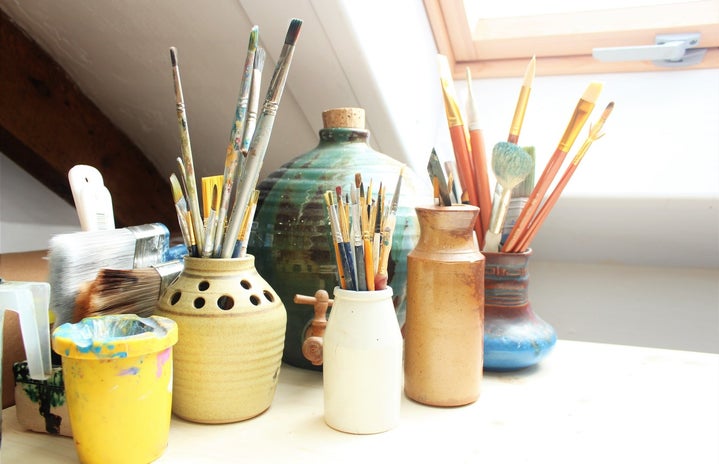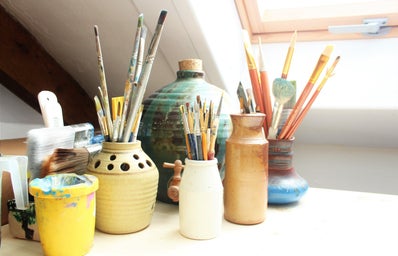We have all been left with plenty of leisure time this year. With all this extra time on our hands, it is time to expand our horizons. Last November, I started painting again. I had the supplies, but I had never really focused on painting for more than a month or so at a time. After watching a few tutorials, I learnt a couple of skills that I think can help others get started on their journey to painting.
Here are a few tips I have learnt over the past few months:
- Don’t be afraid to use your paint!
-
It can be intimidating to see how much paint costs as well as all the other supplies. The price can be an obstacle for a lot of people. However, there are cheaper options of paints that can be found at craft stores or even the dollar store. Painting requires a lot of paint, especially to cover the background. It is better to use paints that you are not afraid to use than to have materials you are trying to conserve for as long as possible.
- Blending can come later
-
A skill everyone wants to learn right away is blending, being able to mix colours on the canvas to create a gradient. The problem is that blending is difficult. Trying to blend without the proper know-how can lead to a ruined painting. I have had to restart a few paintings because of this mistake. You will eventually learn to blend, but it is best to keep it simple in the beginning.
- Layering
-
Layering has changed my painting for the better. Before, I never paid all that much attention to the steps in which to add the items on the canvas. I learnt that the painting looks more realistic if you paint in layers. I like to paint mountain scenes, so I start by painting the sky. Next, I add the clouds. Lastly, the mountains. With the background already painted, the objects in the foreground pop more in the picture.
- Colour wheel
-
You can start painting with just a few colours: red, blue, and yellow. Using those colours to create a mixture is the hard part. A colour wheel can help you figure out which colours you can make with what you have. Try mixing the colours before painting anything to see what you can come up with. This technique is typically done in a circle on paper away from your painting to see which colours compliment and contrast each other.
- Reference picture
-
Unlike what some people might think, using a reference picture is not cheating. It allows you to get a feel for where you want the objects in your painting and which colours to use. The picture is simply a reference. You can change it up however you wish. You can base your painting very loosely on the picture or make it as similar as you please. Having a reference makes it a lot easier to get started when you first begin painting.
- Paint once a week
-
Everyone always says practice makes perfect. Painting is no different. More practice improves your painting skills. To keep up with your skills, I suggest trying to paint at least once a week. There are plenty of canvas pads and special paper that can be used for painting. Buying canvases all the time can get a little expensive. A painting pad is the perfect way to get around that. The pads also take away some of the pressure to produce masterpieces.
- Realism vs Impressionism vs Abstract
-
When people begin painting, they typically believe that they need to make realistic representations of their ideas, but there are a lot of different kinds of painting styles. Impressionistic painting gives you the idea of what you are trying to show without the need to make it realistic. You can paint as abstractly as you wish. Do not limit yourself because of what you think everyone else is doing. Our art styles are all different.
- Do not compare your work
-
It can be hard to not compare yourself to others, but they may have more practice and experience than you. It is not fair to you or them to compare yourselves. Painting can be really fun if you let your worries about comparison go. Do not think about how perfect you want the painting to be. Go in with no expectations and enjoy yourself.
For more tips, there are plenty of resources online. One of my favourite painters is Katie Jobling. She makes great painting tutorials on YouTube for anyone who wants a little guidance. Now, you can enjoy painting with a little more information in mind. Good luck!


